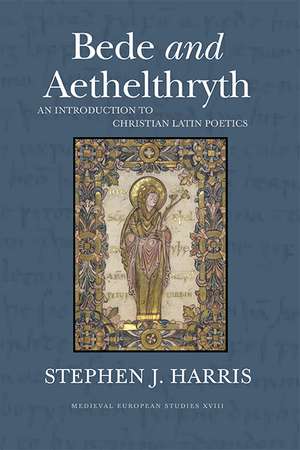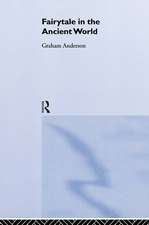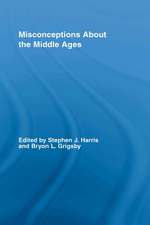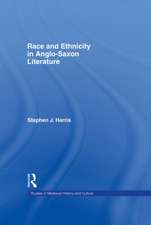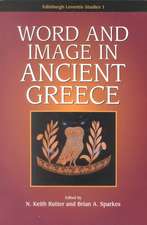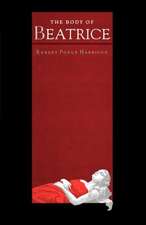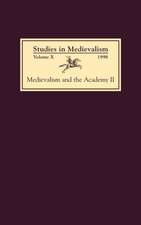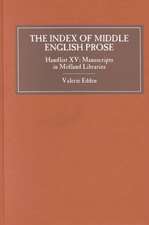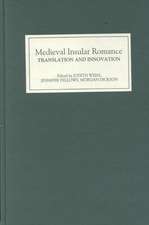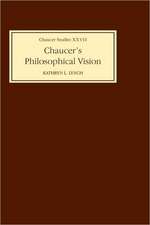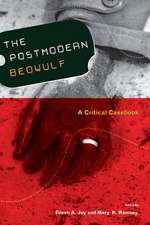Bede and Aethelthryth: An Introduction to Christian Latin Poetics: WV MEDIEVEAL EUROPEAN STUDIES, cartea 18
Autor Stephen J. Harrisen Limba Engleză Paperback – mai 2016
Bede and Aethelthryth asks why Christians in Britain around the year 700 enjoyed Latin poetry. What did they see in it? What did they get from it? This book attempts to reconstruct the horizon of expectation of a highly learned, Latin-speaking nun as she encounters a fifty-line poem by the Venerable Bede, the Hymn to Aethelthryth.
The reconstruction is hypothetical and derived from grammatical manuals, learned commentaries from the early medieval period (especially Servius’s commentary on Virgil), and a wide variety of aesthetic observations by classical and medieval readers. The first four chapters describe basic expectations of a reader of Christian Latin poetry. The fifth chapter places the Hymn in its context within Bede’s Ecclesiastical History. A few pages after Bede records his hymn, Caedmon will recite his own hymn under the watchful eye of Whitby’s Abbess Hild, who was a friend of Aethelthryth.
Both hymns are attempts to reform the lyric traditions of pagan Rome and pagan Anglo-Saxon England in the light of Christian teaching. The last three chapters contain a line-by-line commentary on Bede’s alphabetic, epanaleptic elegy.
The reconstruction is hypothetical and derived from grammatical manuals, learned commentaries from the early medieval period (especially Servius’s commentary on Virgil), and a wide variety of aesthetic observations by classical and medieval readers. The first four chapters describe basic expectations of a reader of Christian Latin poetry. The fifth chapter places the Hymn in its context within Bede’s Ecclesiastical History. A few pages after Bede records his hymn, Caedmon will recite his own hymn under the watchful eye of Whitby’s Abbess Hild, who was a friend of Aethelthryth.
Both hymns are attempts to reform the lyric traditions of pagan Rome and pagan Anglo-Saxon England in the light of Christian teaching. The last three chapters contain a line-by-line commentary on Bede’s alphabetic, epanaleptic elegy.
Din seria WV MEDIEVEAL EUROPEAN STUDIES
-
 Preț: 269.48 lei
Preț: 269.48 lei -
 Preț: 262.76 lei
Preț: 262.76 lei -
 Preț: 266.95 lei
Preț: 266.95 lei -
 Preț: 265.38 lei
Preț: 265.38 lei -
 Preț: 265.38 lei
Preț: 265.38 lei -
 Preț: 276.15 lei
Preț: 276.15 lei -
 Preț: 78.82 lei
Preț: 78.82 lei -
 Preț: 275.08 lei
Preț: 275.08 lei -
 Preț: 258.87 lei
Preț: 258.87 lei -
 Preț: 294.95 lei
Preț: 294.95 lei -
 Preț: 278.31 lei
Preț: 278.31 lei -
 Preț: 258.66 lei
Preț: 258.66 lei - 14%
 Preț: 335.91 lei
Preț: 335.91 lei
Preț: 266.88 lei
Nou
Puncte Express: 400
Preț estimativ în valută:
51.09€ • 52.54$ • 42.39£
51.09€ • 52.54$ • 42.39£
Carte disponibilă
Livrare economică 25 ianuarie-08 februarie
Preluare comenzi: 021 569.72.76
Specificații
ISBN-13: 9781940425931
ISBN-10: 194042593X
Pagini: 216
Dimensiuni: 152 x 229 x 23 mm
Greutate: 0.48 kg
Ediția:1st Edition
Editura: West Virginia University Press
Colecția West Virginia University Press
Seria WV MEDIEVEAL EUROPEAN STUDIES
ISBN-10: 194042593X
Pagini: 216
Dimensiuni: 152 x 229 x 23 mm
Greutate: 0.48 kg
Ediția:1st Edition
Editura: West Virginia University Press
Colecția West Virginia University Press
Seria WV MEDIEVEAL EUROPEAN STUDIES
Notă biografică
Stephen Harris teaches in the Department of English and in the Department of German and Scandinavian Studies at the University of Massachusetts in Amherst, MA. His books include Race and Ethnicity in Anglo-Saxon Literature;Misconceptions about the Middle Ages, edited with Bryon Grigsby; and Vox Germanica: Essays on Germanic Literature and Culture in Honor of James E. Cathey, edited with Michael Moynihan and Sherrill Harbison.
Textul de pe ultima copertă
Bede and Aethelthryth asks why Christians in Britain around the year 700 enjoyed Latin poetry. What did they see in it? What did they get from it? This book attempts to reconstruct the horizon of expectation of a highly learned, Latin-speaking nun as she encounters a fifty-line poem by the Venerable Bede, the Hymn to Aethelthryth.
The reconstruction is hypothetical and derived from grammatical manuals, learned commentaries from the early medieval period (especially Servius’s commentary on Virgil), and a wide variety of aesthetic observations by classical and medieval readers. The first four chapters describe basic expectations of a reader of Christian Latin poetry. The fifth chapter places the Hymn in its context within Bede’s Ecclesiastical History. A few pages after Bede records his hymn, Caedmon will recite his own hymn under the watchful eye of Whitby’s Abbess Hild, who was a friend of Aethelthryth.
Both hymns are attempts to reform the lyric traditions of pagan Rome and pagan Anglo-Saxon England in the light of Christian teaching. The last three chapters contain a line-by-line commentary on Bede’s alphabetic, epanaleptic elegy.
The reconstruction is hypothetical and derived from grammatical manuals, learned commentaries from the early medieval period (especially Servius’s commentary on Virgil), and a wide variety of aesthetic observations by classical and medieval readers. The first four chapters describe basic expectations of a reader of Christian Latin poetry. The fifth chapter places the Hymn in its context within Bede’s Ecclesiastical History. A few pages after Bede records his hymn, Caedmon will recite his own hymn under the watchful eye of Whitby’s Abbess Hild, who was a friend of Aethelthryth.
Both hymns are attempts to reform the lyric traditions of pagan Rome and pagan Anglo-Saxon England in the light of Christian teaching. The last three chapters contain a line-by-line commentary on Bede’s alphabetic, epanaleptic elegy.
